Suzuki GSX-R 1000 [2005–2006]: A Timeless Superbike Experience
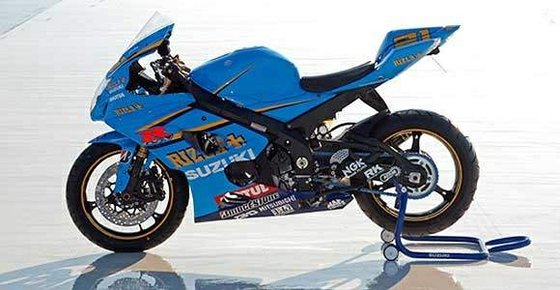
When Suzuki unleashed the 2005–2006 GSX-R 1000, it wasn’t just another iteration of their flagship sportbike—it was a statement. This generation, often dubbed the K5/K6, redefined what riders expected from a liter-class machine. Even today, straddling this bike feels like plugging into a raw, unfiltered connection between human and asphalt. Let’s dissect why this GSX-R remains a legend and how it stacks up against its peers.
Engine Performance: Controlled Fury
At the heart of the GSX-R 1000 lies a 998.6cc inline-four engine that delivers 178 hp (131 kW) at 11,000 rpm and 118 Nm (87 lb-ft) of torque at 8,500 rpm. The numbers alone are impressive, but the real magic is in how Suzuki tamed this beast.
Power Delivery
Thumb the starter, and the engine awakens with a metallic growl that transitions into a smooth idle. The first twist of the throttle reveals a deceptive docility below 7,000 rpm—until you crack it open. From 7,000 rpm onward, the GSX-R transforms. The power surge isn’t just linear; it’s exponential. By 9,000 rpm, you’re pinned to the tank, watching the tach needle chase the 13,500 rpm redline. Yet, despite the ferocity, the engine remains butter-smooth, thanks to titanium valves and a reinforced crankshaft.
The dual-injector fuel system deserves praise. Low-speed throttle response is crisp, eliminating the jerky behavior older liter bikes were notorious for. In sixth gear at 4,000 rpm (roughly 100 km/h or 62 mph), a full-throttle roll-on still delivers neck-snapping acceleration—a testament to its broad torque curve.
Transmission & Clutch
The 6-speed gearbox is a masterclass in precision. Upshifts are snick-snick quick, especially under hard acceleration, while the slipper clutch makes aggressive downshifts drama-free. First gear is tall (2.56:1), which can feel awkward in city traffic but pays dividends on track exits.
Handling: Surgical Precision
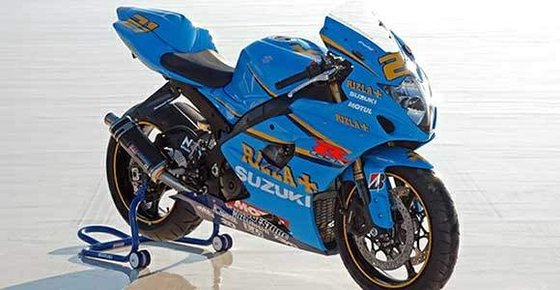
Chassis Dynamics
Suzuki shaved 2 kg (4.4 lbs) off the previous model, resulting in a 166 kg (366 lbs) dry weight. The aluminum twin-spar frame balances rigidity and flex, offering feedback that’s rare in modern bikes. At low speeds, the GSX-R feels almost nervous—like a racehorse at the gate. But push harder, and it settles into a rhythm.
The geometry—23.75° rake and 96 mm (3.8 in) trail—strikes a perfect compromise between agility and stability. Flicking through chicanes feels instinctive, yet the bike remains planted at 180+ mph (290 km/h). The Kayaba suspension (43mm inverted forks and rear monoshock) is firm but communicative. Over rough pavement, the rear can patter under hard acceleration, but it’s a small price for razor-sharp cornering.
Ergonomics
The K5/K6’s rider triangle is surprisingly humane. The seat height drops to 810 mm (31.9 in), and the narrowed tank lets shorter riders plant both feet. Clip-ons are 40 mm closer than the previous model, reducing reach without cramping the legs. After an hour in the saddle, your wrists will complain, but that’s liter-bike life.
Braking: Confidence Inspiring
Radial-mount Tokico calipers grip 310 mm discs up front, delivering stoppies-on-demand power. Initial bite is progressive—no wooden feel here—and lever feedback is telepathic. The rear 220 mm disc is adequate, though most riders will rely on the front.
Design & Aesthetics
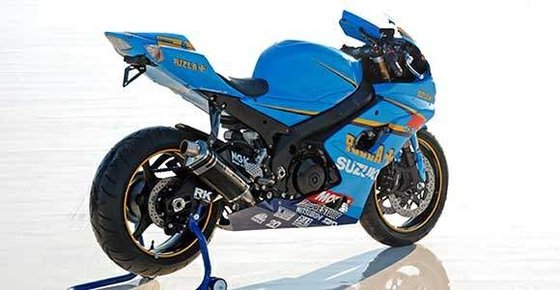
The 2005 redesign sharpened the GSX-R’s lines, reducing drag by 5%. The iconic twin-headlight setup and triangular screen remain, but the tail section is sleeker. Limited editions like the Matte Black and Phantom (a 200-unit run with Yoshimura exhausts) added exclusivity. The Rizla MotoGP replica, mimicking Chris Vermeulen’s livery, is a collector’s gem.
Competition: How Does It Stack Up?
In the mid-2000s, the liter-bike wars were fierce. Here’s how the GSX-R 1000 fared:
Kawasaki ZX-10R (2004–2006)
The ZX-10R was lighter and marginally nimbler, but its peaky powerband demanded skilled throttle control. The Suzuki’s broader torque curve made it more forgiving on street rides.
Honda CBR1000RR (2004–2007)
Honda’s offering prioritized refinement over raw power. The CBR’s silky engine and plush suspension were better for touring, but it lacked the GSX-R’s track-day edge.
Yamaha YZF-R1 (2004–2006)
Yamaha’s 5-valve engine screamed to 13,500 rpm, offering a thrilling top-end rush. However, its tall gearing and twitchy chassis made it less versatile than the Suzuki.
Verdict: The GSX-R 1000 struck a rare balance—track weapon by day, (relatively) tame street machine by night.
Maintenance: Keeping the Legend Alive
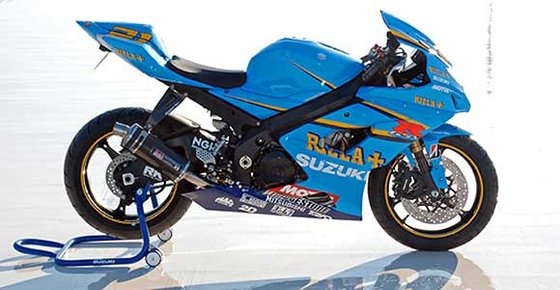
Key Considerations
- Oil Changes: Use synthetic 10W-40 oil every 6,000 km (3,700 miles). The oil cooler and efficient lubrication system protect the high-revving engine.
- Valve Adjustments: Check every 24,000 km (15,000 miles). Titanium valves hold clearance well, but neglect risks catastrophic damage.
- Chain Care: The #530 chain needs regular cleaning and lubrication. Upgrade to a DID X-ring chain for longevity.
- Brake Upgrades: Swap rubber lines for braided stainless steel (available at MOTOPARTS.store) to improve lever feel.
Common Upgrades
- Exhaust: The stock titanium system is lightweight but restrictive. A full Yoshimura or Akrapovič system unlocks ~5 hp and enhances that iconic inline-four howl.
- Suspension Tuning: Re-valve the Kayaba units for your weight/riding style. MOTOPARTS.store offers Öhlins cartridges for track enthusiasts.
- ECU Flash: Modern fuel maps smooth low-RPM fueling and remove factory restrictions.
Conclusion: Why the K5/K6 Endures
The 2005–2006 GSX-R 1000 isn’t just a relic—it’s a benchmark. Its combination of brute power, agile chassis, and tunability makes it a favorite among collectors and track-day regulars. Whether you’re chasing knee-dragging glory or nostalgic Sunday rides, this Suzuki delivers. And when it’s time to upgrade, remember: MOTOPARTS.store has everything to keep your Gixxer in fighting shape.
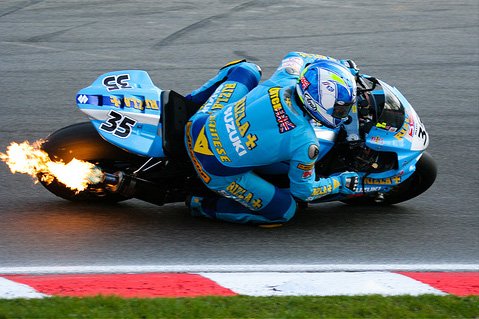














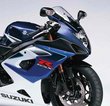


Specifications sheet
| Engine | |
|---|---|
| Stroke: | Four-stroke |
| Max power: | 131 kW | 176.0 hp |
| Max torque: | 118 Nm |
| Valvetrain: | DOHC, 4 valves per cylinder (titanium intake/exhaust) |
| Fuel system: | Electronic Fuel Injection (44mm throttle bodies, dual injectors) |
| Lubrication: | Wet sump |
| Max power @: | 11000 rpm |
| Displacement: | 999 ccm |
| Max torque @: | 8500 rpm |
| Configuration: | Inline |
| Cooling system: | Liquid cooled |
| Compression ratio: | 12.5:1 |
| Number of cylinders: | 4 |
| Dimensions | |
|---|---|
| Wheelbase: | 1405 mm (55.3 in) |
| Dry weight: | 166 |
| Seat height: | 810 mm (31.9 in) |
| Overall width: | 710 mm (28 in) |
| Overall height: | 1130 mm (44.5 in) |
| Overall length: | 2030 mm (79.9 in) |
| Ground clearance: | 125 mm (4.9 in) |
| Fuel tank capacity: | 18 L (4.8 US gal) |
| Drivetrain | |
|---|---|
| Final drive: | chain |
| Gear ratios: | 1st 2.562, 2nd 2.052, 3rd 1.714, 4th 1.500, 5th 1.360, 6th 1.269:1 |
| Chain length: | 110 |
| Transmission: | 6-speed constant mesh with back-torque limiting slipper clutch |
| Rear sprocket: | 42 |
| Front sprocket: | 17 |
| Maintenance | |
|---|---|
| Rear tire: | 190/50 z-17 |
| Engine oil: | 10W40 |
| Front tire: | 120/70 z-17 |
| Brake fluid: | DOT 4 |
| Spark plugs: | NGK CR9EIA-9 |
| Spark plug gap: | 0.7 |
| Coolant capacity: | 2.4 |
| Forks oil capacity: | 1.02 |
| Engine oil capacity: | 3.3 |
| Chain maintenance interval: | Every 500 km (clean/lubricate) |
| Engine oil change interval: | Every 5000 km or 2 years |
| Valve clearance (intake, cold): | 0.10–0.20 mm |
| Valve clearance check interval: | 24,000 km / 15,000 mi |
| Valve clearance (exhaust, cold): | 0.20–0.30 mm |
| Recommended tire pressure (rear): | 2.9 bar (42 psi) |
| Recommended tire pressure (front): | 2.5 bar (36 psi) |
| Chassis and Suspension | |
|---|---|
| Rake: | 23.75° |
| Frame: | Aluminium twin-spar |
| Trail: | 96 mm (3.8 in) |
| Rear brakes: | Single 220mm disc, 2-piston caliper |
| Front brakes: | Dual 310mm discs, radial-mount 4-piston calipers |
| Rear suspension: | Kayaba monoshock, adjustable ride height/preload/compression/rebound |
| Steering damper: | Factory-fitted cross-mounted damper |
| Front suspension: | 43mm Kayaba inverted forks, DLC-coated, adjustable preload/compression/rebound |
| Rear wheel travel: | 130 mm (5.1 in) |
| Front wheel travel: | 125 mm (4.9 in) |
| Additional Specifications | |
|---|---|
| Wheels: | 3-spoke cast aluminum |
| Headlight: | 55/65W halogen |
| Colors (2005): | Blue/White, Black/Grey, Black/Yellow |
| Colors (2006): | Blue/White, Silver/Gray, Red/Black |
| Instrumentation: | Analog tachometer, digital speedometer, gear indicator, fuel range, coolant temp |
| Special editions: | 2006 Phantom Limited Edition (200 units, Yoshimura exhaust) |



















